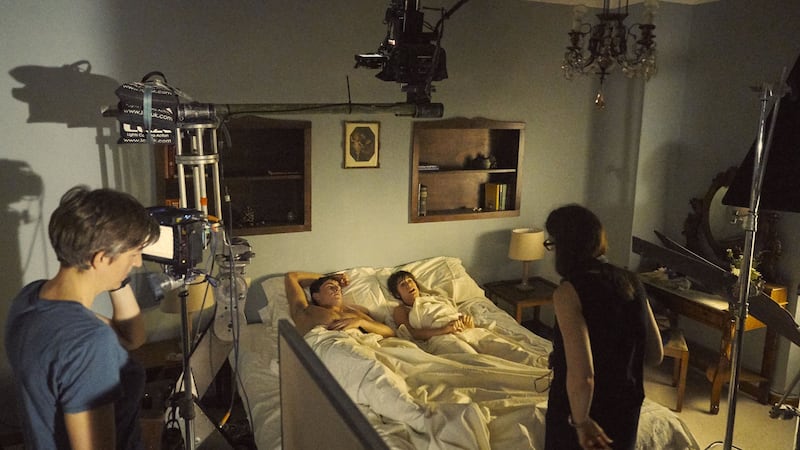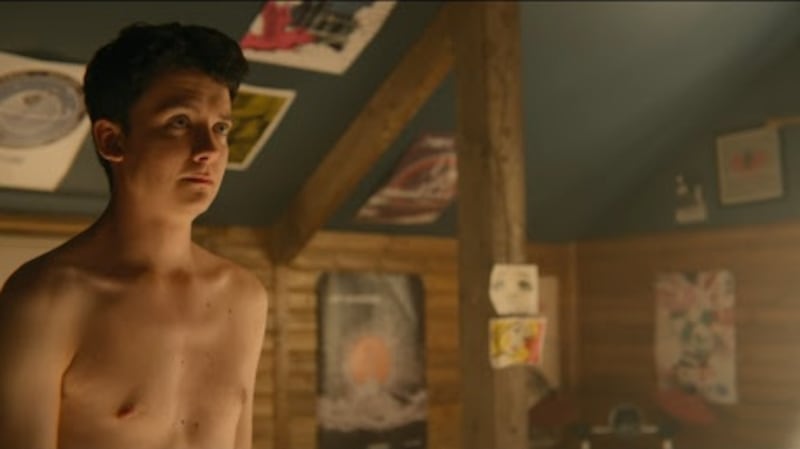Some of the film industry’s most famous (or infamous) sex scenes have lingered in the public’s imagination. Yet for many of the performers involved, they are parts of the job they’d rather forget.
Actor Rupert Grint, for example, noted how strange it was to be filming graphic scenes on Cherrybomb with 12 other men (the crew) in the room, and called it “a traumatic experience”. After filming lengthy sex scenes for Blue Is the Warmest Colour, Léa Seydoux and Adèle Exarchopoulos expressed their displeasure, with the latter noting: “Most people don’t even dare to ask the things that he [director Abdellatif Kechiche] did.”
Occasionally, a director’s desire to break new ground and create an audacious project collides with a young star’s vulnerability. With many new actors eager to please or appease directors, the dynamic can become a powder keg. Adrienne Corri (A Clockwork Orange) and Maria Schneider (Last Tango in Paris) were both traumatised by humiliating sex scenes.
Even before #MeToo brought some of these stories to light, movement director Ita O’Brien had been creating an on-set intimacy guide. After working with actors on movement workshops, she noted that many of them felt vulnerable, unsure and compromised while filming sex scenes.
After working on her own project exploring the dynamic of sexual abuse, titled Does my sex offend you?, O’Brien realised that something had to change.
“I started my project in 2015 and was looking at how do we keep actors safe and what practices needed to be put in place,” she reveals. “When the Weinstein thing happened [as a number of women came forward to highlight instances of harassment at the hands of movie producer Harvey Weinstein], I was ready to say to directors, ‘Here are the guidelines. This will give you a professional structure in order to do intimate content in a professional way.’”
With directors and producers keen on fostering a safer workspace, O’Brien soon found herself hired as an on-set intimacy co-ordinator. After “choreographing” the sex scenes on Gentleman Jack, Watchmen and Netflix’s Sex Education, O’Brien recently worked on Normal People, the TV adaptation of Sally Rooney’s novel, along with director Lenny Abrahamson.

You're putting in techniques that keep your actors safe, which will let them act their socks off
“I can’t imagine doing things like that without Ita,” its star, Daisy Edgar-Jones recently said. “There was a sense with Ita in charge of the physical stuff, that all we had to worry about were the story beats, and doing the writing justice. Then, it becomes like a job. You’re such good friends with the crew that you do a scene like that, then you break for lunch. It’s a bit odd.”
With a mum from Cookstown in Co Tyrone and a dad from Clonmel, O'Brien laughs when I ask about how a nice Catholic girl like herself wound up on film sets, essentially showing actors how to simulate sex.
Passionate
Yet she takes her work very seriously, and is passionate about getting the scenes right. O’Brien likens her work, in a way, to that of a stunt co-ordinator, or dance choreographer. Her job is to serve the director’s vision, while also advocating for the welfare of the actors involved in the scenes.
“You wouldn’t say the stunt co-ordinator is there to make the actors safe – you would say the stunt co-ordinator is there to give you really exciting, convincing, full-on fight scenes that will have people on the edge of their seats,” O’Brien explains. “You’re putting in techniques that keep your actors safe, which will let them act their socks off and create the best intimate content that they can.”
O’Brien’s on-set guidelines ensure a professional, transparent and open film set. Any nudity or sexual scenes need to be agreed upon well in advance, areas of touch need to be established, and kissing should not involve tongues.
Appropriate covering for genitals should also be provided for more graphic sex scenes.
“Never, ever should bare genitalia touch if you’re doing a sex scene,” reveals O’Brien. “We will always have a gentleman using a genitalia covering or a dance belt, and equally, the lady has a covering or a flesh-coloured G-string. I use a whole host of different barriers as well – I make up little cushions to use. I have the equivalent of a stunt co-ordinator’s crash mat. I have a whole gamut of a kit so that we’re not having pubic bone on pubic bone.”
Some of cinema's most seemingly graphic scenes may look like two naked people in the throes of genuine passion, but this is rarely the case. Belfast actor Jamie Dornan has noted of his Fifty Shades of Grey scenes: "Your dignity is intact inasmuch as it's all tucked . . . As a guy you put all your essentials in a little bag and you tie it up like a little bag of grapes and it's tucked away."
On the Irish film Sensation, actor Kelly Campbell recalled to The Irish Times a sex scene she filmed with Domhnall Gleeson: “Domhnall and I had our jeans on during that scene, while his girlfriend and my husband sat in the room next to us during filming.”
Similarly, actor Moe Dunford revealed to The Irish Times the truth behind shooting a sex scene with Catherine Walker in the film Patrick’s Day (2014).
“To shoot the scene, Michael [Lavelle, cinematographer] had to get into my clothes and hold this huge camera,” he noted. “He was bending backwards onto the bed and I was sitting behind him in my underpants holding him up. In another scene where [Catherine] and I are lying down naked, so much of that was about getting our bodies in the right position, or having to move our faces a few inches to the left or whatever.”
On Normal People, Londoner Edgar-Jones and Kildare-born Paul Mescal, both in their first major screen roles, were understandably nervous about approaching the show’s many sex scenes.
“With Lenny [Abrahamson], there was a real sense of equality and collaboration,” explains O’Brien. “Lenny was so open and inviting conversations about the emotional journey that the characters are on.”
Personal life
Much of O’Brien’s on-set work involves working through the actors’ movements during a sex scene, and ensuring that the personal life is separated from the professional. “Say for intercourse, we might say, ‘Okay, four slow strokes, then moving faster with eight strokes, leading into orgasm,’ and then they can just let go and be free within it,” O’Brien explains.
Of Normal People, she adds: “It felt so important for these two people that they know they can be professional; nothing is left to chance and there’s no vulnerability.
“We had this one morning of filming, and at lunchtime, Daisy admitted that she felt a bit compromised and needed some time and space going into one sex scene. I checked in with her, went to the producers and then they knew she had to be looked after. Then myself, Daisy and Lenny just talked through all of the concerns. By the time it came to filming the scene, we were laughing our heads off, and it was so open and so comfortable.”

The actors had clear choreography, so they were really comfortable with the content
Sex Education also features a number of acting newcomers working on sexual scenes of all stripes. In the series, which centres on a British school packed with sexually active and adventurous teenagers, the sex scenes run the gamut from comically awkward to graphically intense.
“What was brilliant with that production was that the producers and director absolutely had the intention of putting in place best practice, so that was my first production as an intimacy co-ordinator,” says O’Brien.
After 36 years in the film business, O’Brien has heard about very different on-set experiences from actors.
“I had the joy of speaking at the Berlinale film festival last month, and Sofia Helin, who stars on The Bridge, spoke about doing intimate scenes without an intimacy co-ordinator, and noted how every intimate scene cost her a bit. You’re sort of having to shore yourself up and override perhaps what would be within your agreement.
“I feel there are times we have sat and watched a sex scene where the actor isn’t feeling comfortable, and we squirm in the audience, because you feel that discomfort,” O’Brien adds. “On Sex Education, there are so many scenes where the character is meant to feel awkward or uncomfortable, yet the actors had clear choreography, so they were really comfortable with the content. I hope that we feel as the audience, we can stay laughing and enjoying it, and freely enjoying that character’s journey.”
O’Brien notes that male actors can feel every bit as vulnerable as women on set or on stage. “The two people that I remember encountering in workshops were middle-aged men still traumatised from experiences they had while filming years ago, or on a theatre production.”
Last-minute changes
She recalls one production in which the director wanted to make last-minute changes to the sex scenes.
“He told me to check it out with the actress. He didn’t even think to check it out with the actor,” O’Brien says. “When the actor noted that he was uncomfortable with it, the director said, ‘Oh for God’s sake, call yourself an actor?’
“It shouldn’t be that if you’re a good actor, it means you’re prepared to do any degree of nudity or sexual content. You don’t know what has happened to somebody, and we don’t need to know.”
As part of her guidelines, O’Brien also encourages professionalism among those behind the camera.
“Beforehand, there was that nervousness, like it’s a bit of slap and tickle, and that language around that could be objectifying, titillating and infantilising,” explains O’Brien. “I had a situation on a production where two actors were going to be working completely naked after lunch, and there was already some banter around the crew, which instantly makes those actors vulnerable. I’m not Mary Whitehouse, or the fun Gestapo or anything, but it’s just really important that we’re all open and free and respectful.”
On Normal People, she says, “Lenny has commented on that shift of being respectful, but also being open and having fun, especially when you are working with beautiful scenes.
“You want to celebrate, and you want to show [Connell and Marianne’s] bodies, souls and minds coming together. But equally, it’s about having a laugh, having a really good day at work, and leaving the set knowing you’ve created the best work that you can.”
In more recent times, the future of sex scenes has been thrown into sharp focus. Covid-related regulations on social distancing and bodily contact now mean that the screen industry is scrambling to create new guidelines. In the UK, actors will have to stand 2 metres apart and film in front of green screens more often when TV shows resume, according to a new blueprint issued by broadcasters including the BBC, ITV and Channel 4.
With performers avoiding direct contact with each other, it would appear that intimate content on screen could well be pretty chaste for the foreseeable future. And yet, it means that the role of intimacy co-ordinator may take on an even richer relevance.
“As intimacy co-ordinators, we’re awake and responsive to what each production is asking, and, going forward, we will be there to facilitate open communication and transparency,” says O’Brien. “We make sure that consent around touch and nudity is agreed by all parties.
“We’re creative people, so it will be a case of responding to each and every production, as and when needed,” she adds.
As to what film and TV’s intimate content may look in the post-pandemic climate, O’Brien says, “I can’t tell you what it will look like. But we’ll be working in very interesting times.”










